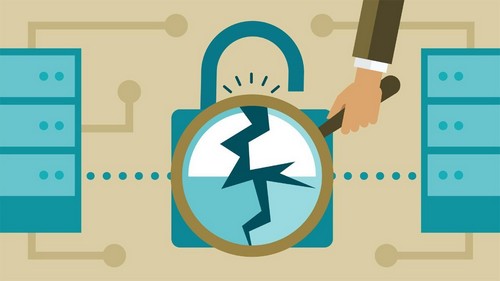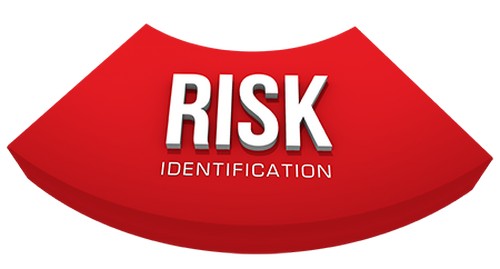
Uncovering Risks: Benefits and Techniques of Identification

Risk identification is the crucial process of recognizing potential risks, hazards, and threats that could hinder the success of a program, investment, or enterprise It allows businesses to proactively mitigate risks and make informed decisions
Identifying potential risks is crucial in ensuring the success of a program, enterprise or investment. This process involves carefully documenting and communicating potential concerns that may hinder the achievement of objectives. By recognizing potential events early on, the first step towards effective risk management is taken, enabling the organization to mitigate negative impacts and stay on track towards achieving its goals.
Assessments are conducted to evaluate programs, investment decisions, decision-making options, and operational or cost uncertainties while keeping in mind the nature of the assessment to make informed decisions regarding risks. This process involves identifying an organization's risks and vulnerabilities and bringing attention to them within the organization. It is a crucial step in comprehending and managing risks, which are critical activities for the successful management of financial institutions.
What is Risk identification?
To ensure success in any program or organization, it is crucial to establish clear goals and objectives and foster a shared understanding among team members. This sets the stage for identifying potential risks and conducting thorough assessments.
To accurately identify risks, it is important to carefully review the project scope, cost estimates, and schedule while considering performance challenges and stakeholder expectations. This requires an understanding of key performance parameters, implementation challenges, and the firm's ability to handle threats, maintain safety and security, and address vulnerabilities.
What is learned through Risk Identification?
The analysis of historical data related to projects and risk lists can offer valuable insights that can be used to enhance the identification process. This process is a continuous one, and as it progresses, organizations can gain a better understanding of the risks involved and make necessary adjustments to their approach. Additionally, new risks may emerge throughout the project cycle, requiring organizations to remain vigilant and adapt their strategies accordingly.
The process involves guiding the firm or team through the operational aspects of their capabilities to fully understand the potential risks and the impact they could have on users. This crucial step is necessary to truly comprehend the real-world consequences of any risks that might arise during operations.
While it is acknowledged that some risks may be acceptable if they enable the firm to achieve its goals, it can be challenging to communicate these risks to team members or users and provide them with viable alternatives. Developing technical maturity is essential in today's competitive market, as it enables firms to assess risks more effectively.
The expertise and experience of developers and stakeholders can introduce potential risks, and it's important to be mindful of any skill gaps and work to address them. Providing corporate training and exposure can also help mitigate these risks. Additionally, cost estimates can play a crucial role in identifying and addressing potential risks, as they evolve alongside program changes and offer valuable insights.
Benefits of Risk Identification
Identifying and addressing risks throughout the project lifecycle is crucial for success. With larger initiatives, the potential impact of risks can be even greater, making risk management an essential component of project planning. By identifying and analyzing risks based on their likelihood and impact, project teams can prioritize and allocate resources to address them in a timely and cost-effective manner. This proactive approach can help mitigate potential issues and ensure the project is completed on time and within budget.
By identifying risks, project managers gain a comprehensive understanding of the project scope, allowing for thorough consideration of potential risks and the development of effective mitigation strategies. This process enables risks to be resolved through careful planning while maintaining project objectives and desired outcomes. Additionally, listing and analyzing assumptions strategically helps to eliminate inaccuracies early on in the project.
Problems of Risk Identification
In project management, risks are not always negative. They can also be positive and offer opportunities that were not initially planned. These opportunities, known as "opportunity risks", can arise during the identification process and can help the team or firm achieve their project goals. By identifying and making the most of these opportunities, the project can be further optimized for success.
Risk identification has its advantages, but there are also drawbacks to the process. One issue is the potential for unrecognized risks, as well as the possibility that identified risks may never occur. Due to the lack of specific criteria for assessing risks, the process is often subjective and based on expert judgment, which can be unreliable. This subjectivity can also make it challenging to identify and choose the right stakeholders for risk assessment. Additionally, overly abstract descriptions of risks can make them difficult to test, making it crucial to have concrete explanations in order to develop effective solutions.
Need for Risk Identification
Identifying potential risks is crucial in order to mitigate the negative effects of any potential losses on a project or an organization's growth, while simultaneously maximizing positive impacts. Being aware of potential risks allows for a proactive approach to problem-solving during the project, leading to more effective goal achievement. The ultimate goal is to gather necessary information for the subsequent step of risk analysis, which involves reviewing all input variables, activities, key materials, and resources involved in the project.
Effective preparation for crisis situations requires careful consideration and planning beforehand. However, in order to do this successfully, it's essential to have reliable techniques for identifying potential risks. Unfortunately, many companies have overlooked the importance of this process in the past. Nevertheless, it has become increasingly clear that effective risk management is crucial to the success of any project.
By analyzing potential risks, companies can identify areas for improvement and optimize their approach to minimize negative outcomes. Without this critical step, teams may struggle to achieve their desired outcomes or realize the full potential of their project.
Techniques of Rish Identification
The process of risk identification involves gathering the project team, board, and stakeholders to discuss the project goals and potential risks. Through open dialogue, the team can identify potential obstacles and evaluate the potential impact on the project. It is crucial to consider how these risks can be mitigated or addressed, as well as identifying any opportunities that may arise from them. By proactively addressing potential risks, the project can ultimately benefit from these discussions.
The purpose of risk identification is to identify every potential risk, rather than removing them from consideration or creating solutions for risk reduction. These tasks are addressed during the risk assessment and mitigation phases. Effective risk management requires risk identification, which not only increases awareness but also encourages the team to collaborate and achieve success and profitability through brainstorming.










